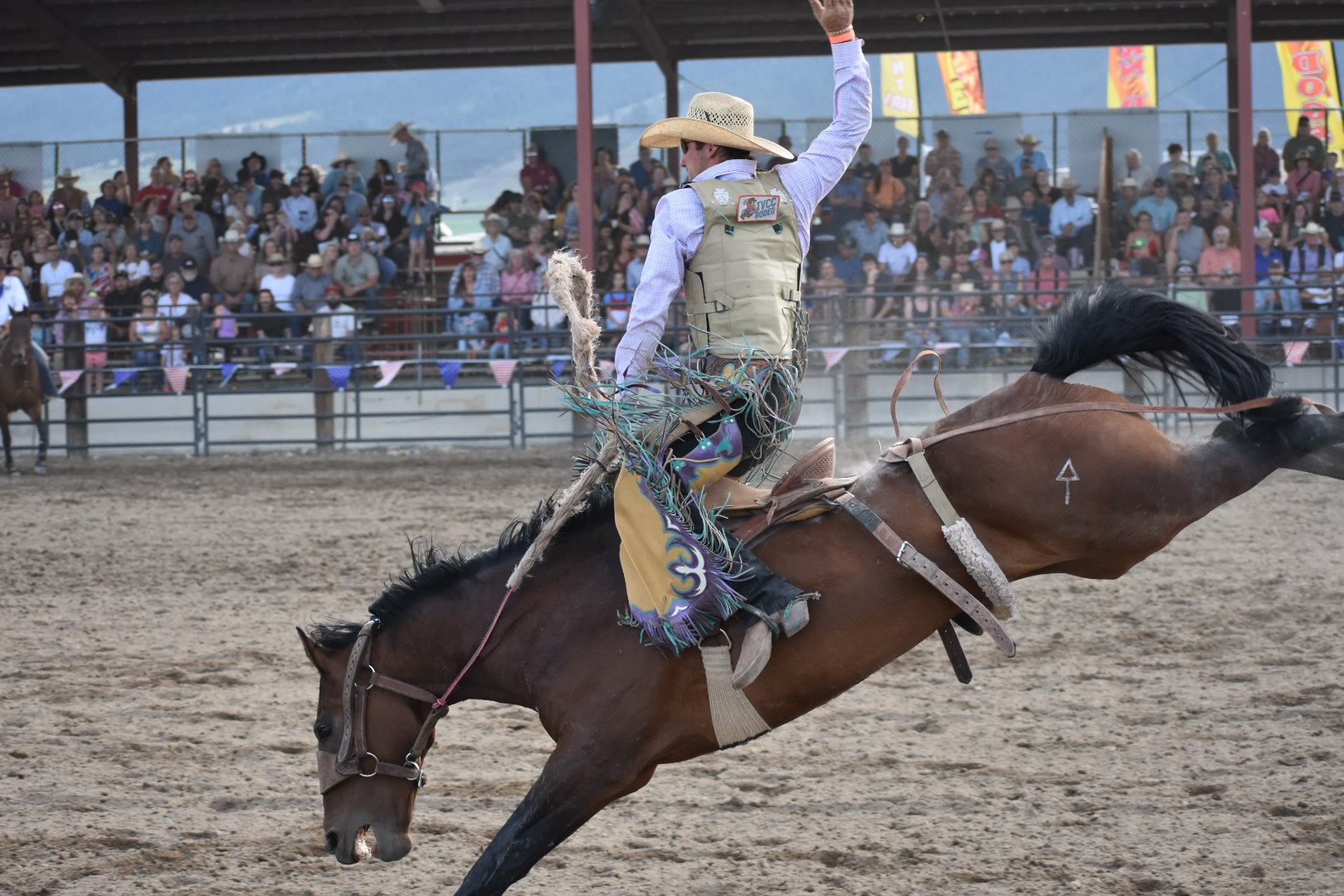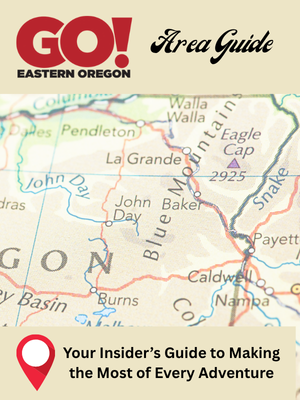Cougar spotted in Baker City
Published 12:00 am Friday, October 3, 2003

- A cougar has been spotted inside the Baker City limits. ().
By JAYSON JACOBY
Of the Baker City Herald
George Keister wants to catch the cougar before it claws someone.
Keister, a state wildlife biologist who works in Baker City, is convinced there’s a big cat lurking inside the city limits.
Since late August at least four people have reported seeing a cougar on or near Spring Garden Hill, at the city’s southeast corner.
Mark Svitak, who lives on the north side of Spring Garden Avenue between Ash and Clark streets, said watching the cougar prowl the hill above his home has become something of a spectator sport.
andquot;I’ve seen it probably half a dozen times,andquot; Svitak said.
He said he usually saw the cougar in the evening.
In most cases he used binoculars to watch the cat as it stalked quail and other birds among the sagebrush and sun-dried grass that covers the hill.
But once Svitak said he climbed partway up the slope. He said he was curious about how the cat would respond.
Svitak said he expected the cougar would flee when he approached to within about 150 yards.
andquot;I ran at it, but it just looked at me,andquot; he said. andquot;Then I figured I better get out of there.andquot;
Svitak said he’s absolutely certain the animal he has watched is a cougar.
It’s much too big to be a domestic cat or even a wild bobcat, he said. And the cougar’s long tail they can reach lengths of three feet, compared with a bobcat’s five inches was a telltale sign.
The cougar’s hair was lighter in color than the typical tawny brown, Svitak said.
Ron Colton was driving his one-horse-drawn carriage along Spring Garden Hill about three weeks ago when he noticed a group of residents gathered around a police car.
Colton said the people were looking at and pointing toward the hill.
He figured they were gazing at the gouge carved by rushing water when a section of the Smith Ditch failed in late August.
But then Colton watched, amazed, as a cougar bolted into the street, running straight between the legs of his Percheron gelding, Donnie.
Colton understood then that the cougar, not the flood scar, had attracted the crowd of onlookers.
The cat sprinted into the sagebrush.
The horse ran, too, but Colton calmed the 2,400-pound animal a block or so away.
He was not carrying any passengers in his carriage at the time.
Like Svitak, Colton is confident in his description.
andquot;I’ve been in the mountains, and I know a cougar from a bobcat,andquot; Colton said.
Also like Svitak, Colton noticed the cougar’s light color.
Colton also described the cougar as andquot;a scrawny little thing.andquot;
andquot;He looked like he hadn’t eaten in a while,andquot; Colton said.
Wildlife biologists and police have searched Spring Garden Hill, but they didn’t find a single cougar track, Keister said.
He wasn’t surprised.
A cougar, with its soft, wide padded paws, probably would not leave distinct prints on the treeless dirt slopes, sunbaked to a desert-like hardpan at the end of a dry summer, Keister said.
Despite the lack of tracks, Keister said the frequency of sightings in a relatively short period, and the proximity of the places the animal was seen, convinced him the reports are valid, and that a cougar is trying to establish a territory in the area.
He also was persuaded by the similarities in Colton’s and Svitak’s descriptions, in particular the cougar’s unusually light-colored fur.
andquot;I’m worried about this cat,andquot; Keister said. andquot;From everything we can see he’s staying around town.andquot;
(Keister said andquot;he,andquot; but the cougar could be a she.)
Cougars that live near people tend to be more dangerous, Keister said, because they often lose their instinctive fear of humans.
Svitak, who watched the cougar stand still even as he walked toward it, thinks that’s the case with the cat he has seen.
andquot;It’s lost the fear factor,andquot; he said.
Such cougars are more likely to attack a person, Keister said.
He said he also was troubled by Colton’s description of an apparently malnourished cougar.
Svitak, though, does not think the cougar was especially skinny.
andquot;If they get hungry they get desperate,andquot; Keister said. andquot;Those are the most dangerous kinds of cougars.andquot;
Keister emphasizes that he does not want to scare residents.
But he does urge people to take what he calls andquot;proper precautionsandquot;: don’t let small children play outside without supervision, and bring pets inside at night.
andquot;I don’t want to upset people, but that’s what I’d do,andquot; Keister said. andquot;People need to be aware.andquot;
Svitak agrees.
He and his wife, Tangela, have eight children, ranging in age from two to 18.
andquot;I’m consciously thinking about the safety of my family,andquot; Svitak said.
Although most of the cougar sightings occurred on Spring Garden Hill, Keister said at least two people have recently reported seeing a big cat elsewhere in the city.
The most recent happened about 1:20 a.m. Wednesday, half a mile or so west of Spring Garden.
A man riding a bicycle near Seventh and Myrtle streets called police, saying a cougar had stalked him while he pedaled through the darkness.
The man did not give his name, according to a police dispatcher.
And Keister said a woman reported seeing a cougar in her yard near the intersection of Cedar Street and Hughes Lane in north Baker City.
This cougar would not be the first big feline to prowl Baker City.
In July 2001, Keister’s colleague, Todd Callaway, shot and killed a cougar outside the Bridge Street Inn motel, between the Powder River and Dewey Avenue.
That cougar had hunkered beneath a blue spruce tree on the west side of the motel.
Keister said wildlife officials were lucky that day.
The cougar apparently felt safe beneath the tree’s sheltering boughs, and thus didn’t bolt when Callaway opened the window of a motel room and aimed a shotgun at the animal.
Biologists did not need to chase the cougar, or corner it in a place from which it could not easily escape.
But capturing a cougar inside a city, with its labrythine mixture of landscaped yards and fences and streets, rarely is so simple, Keister said.
He urges residents who see a cougar to call his office immediately. The number is 523-5832.
If no one is there, call the city police department, 523-3644, or the county sheriff’s office, 523-6415.
andquot;They’ll call us anyway,andquot; Keister said.
If biologists do corner the cougar, they intend to shoot and kill the animal, he said.
Oregon Fish and Wildlife officials rarely use tranquilizers to subdue cougars that stray into cities, Keister said.
Tranquilizing a cougar poses a greater danger to the public, he said. Here’s why:
First, he said, tranquilizing darts are not as accurate as bullets or a shotgun shell loaded with buckshot.
Second, a darts won’t incapacitate a cougar immediately.
andquot;The animal will run, and by the time it goes down maybe you can’t find it,andquot; Keister said.
Eventually, though, the cougar will awaken.
And then you’re stuck with a cougar that’s still hungry, still loose and probably will a sore spot somewhere on its hide.
Keister understands that some people oppose ODFW’s policy of shooting urbanized cougars.
But he said the agency’s ultimate goal is to protect people and dispatching a cougar as quickly as possible best accomplishes that goal.
andquot;We are going to err on the side of public safety,andquot; Keister said. andquot;We’d like to have that cat living on its own out in the wild, too, but that’s not what it’s doing.andquot;
Keister said biologists also have considered hiring a hound owner to track the cougar.
That might be possible, he said.
However, hounds need a relatively fresh scent a couple of hours old at the most, Keister said.
And running a pack of hounds in a residential neighborhood could turn into a fiasco, he said.
Some residents might not want several baying dogs romping through their blooming chrysanthemums, for example.
And the smorgasbord of scents including domestic cats could waylay even well-trained hounds, Keister said.









